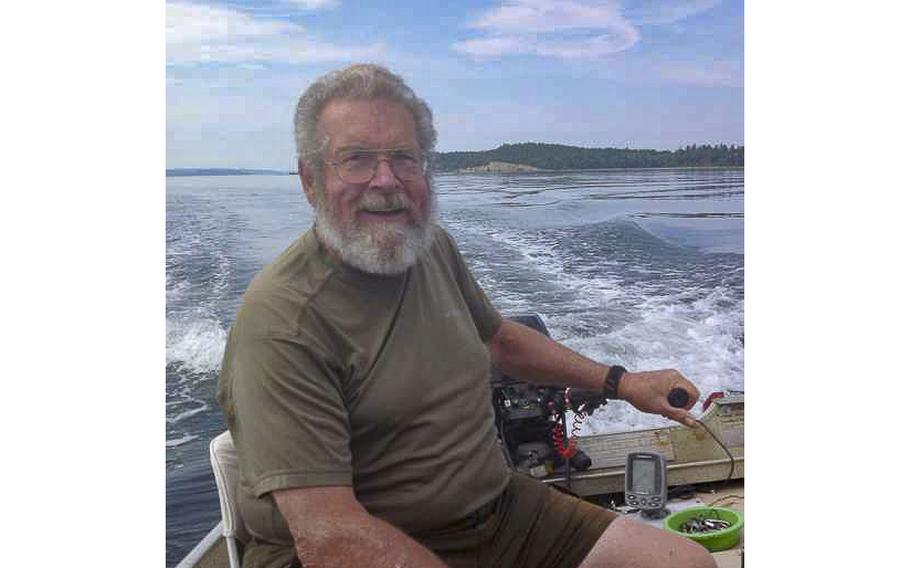
Marine veteran Thad McManus. (Facebook)
(Tribune News Service) —Sixty years ago this month, a U2 reconnaissance plane overflew Cuba and took a series of photos that rocked the White House; the proof was in those images that the Soviet Union was installing medium range ballistic missiles on the island nation less than 90 miles from Miami.
In the days that followed, the world sat perilously close to the brink of nuclear Armageddon as the United States and Soviet Union fought a war of words in backchannel communiques and open meetings at the United Nations.
Books like Bobby Kennedy’s “Thirteen Days: A Memoir of the Cuban Missile Crisis” and movies like “The Missiles of October” and “Thirteen Days” have helped give people a snapshot of what was happening in Washington, D.C., and Moscow.
When Thad McManus, 79, a retired teacher who lives in Poulsbo, Washington, spoke about the Cuban Missile Crisis to his history students at Sammamish High School in Bellevue, where he was a teacher for 28 years before retiring in 1998, he wasn’t quoting from a book.
He’d been there.
In the autumn of 1962, McManus was a young Marine assigned to 1st Battalion, 1st Marines, stationed at Camp Pendleton in California. As the U2 reconnaissance planes overflying Cuba found emplacements for SS-4 Sandal surface-to-surface nuclear-tipped missiles, the Defense Department started putting into motion a series of plans for a naval blockade of the island, as well as operations that called for air strikes on the missile bases and a coordinated airborne and amphibious invasion.
OP PLAN 314-61 was the DOD plan for the invasion of Cuba and called for the 5th Marine Expeditionary Brigade out of Camp Pendleton to be deployed to support amphibious landings. While one of the units of the brigade, 2nd Battalion, 1st Marines, was flown to reinforce the naval base at Guantanamo Bay in Cuba, the rest of the command, including McManus’ unit, would be heading to the Caribbean by ship.
“I only remember being flown out of Pendleton on a chopper — piles of gear and people on the grinder at San Mateo — loaded aboard the Okanogan, packed into the hold,” McManus said. “The sights and sounds of hundreds of guys packed into those holds, buttoned-up for weather and blackout was something I really remember. The scuttlebutt was so overflowing with puke that it looked like one of those Christmas-drip candles, rather than a water fountain.”
The Okanogan was the USS Okanogan, laid down in 1944 for service in World War II and, to this date, the only ship named after the north-central Washington county.
The sense of urgency, as well as security, was palpable, from embarkation in California through the journey south then eastward across the Panama Canal to the Caribbean.
“Late October 1962, a hurried departure, with ammo beneath us,” McManus said. “The whole MEB was scattered over several ships. Blackout at sea, then the trip through the [ Panama] Canal to Roosevelt Roads,” referring to the naval station in Puerto Rico.
McManus did remember one thing about the squadron, which included more than 20 ships, during its transit through the canal: they were “loading coffins in Panama on the way. That was supposed to impress the Soviets. Sure impressed us.”
After all of the rush to get Marines and material loaded aboard ships and planes bound for the Caribbean came the inevitable; the Marines were “standing by to stand by at sea,” McManus said.
While communiques flew between Washington and Moscow in feverish attempts to de-escalate the situation, the Marines had hurried up and waited for an order that never came.
McManus’ unit was transferred aboard another amphibious ship, the USS Whetstone, and got the opportunity to feel the ground beneath their feet again.
In Cuba.
“I was with a detachment of a couple of companies put aboard the Whetstone. We went to Gitmo ( Guantanamo Bay) for a few days to impress the Cubans,” he said.
When the crisis abated, the Marines celebrated with “some hellacious liberty in Vieques and Panama when it was over,” McManus said. “My buddy Lannie and I went out of bounds in Vieques; Lannie got into a dice game in the street and started to win. I got us the hell out of there.”
Looking back now, McManus, who deployed less than three years later to Da Nang for a combat tour in South Vietnam, the Cuban Missile Crisis was an eye-opening moment in his Marine Corps service.
“I know that the high ranks thought it was a complete (mess) logistically, command scattered all over the fleet, plans being re-done all the time, but that was way above me,” he said. “I came out of it with Lance Corporal and the attitude that I did not want to do that ... again.”
Author’s note: Thad McManus was Rob Kauder’s history teacher at Sammamish High School in 1987.
(c)2022 The Spokesman-Review (Spokane, Wash.)
Visit The Spokesman-Review at www.spokesman.com
Distributed by Tribune Content Agency, LLC.